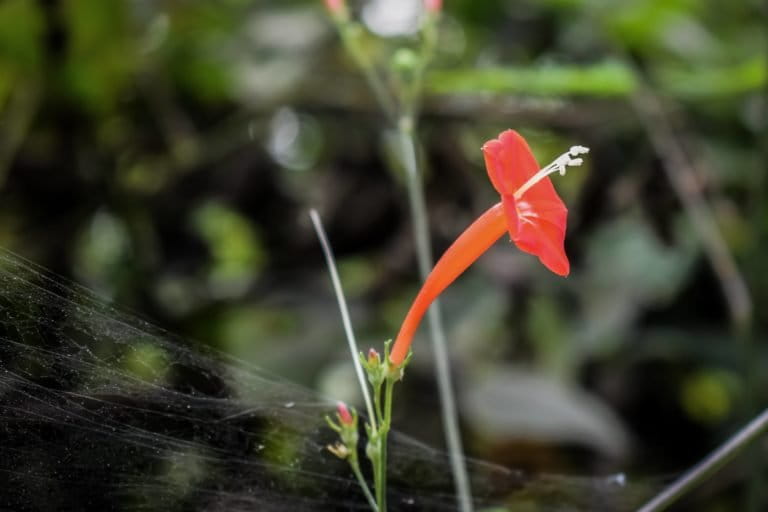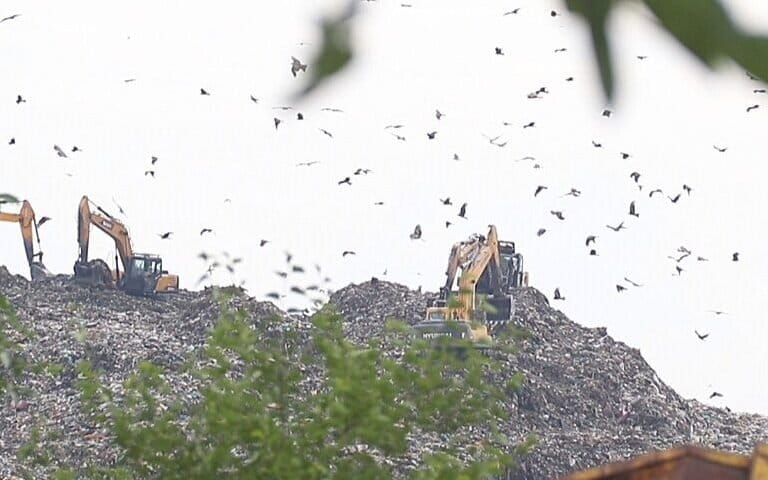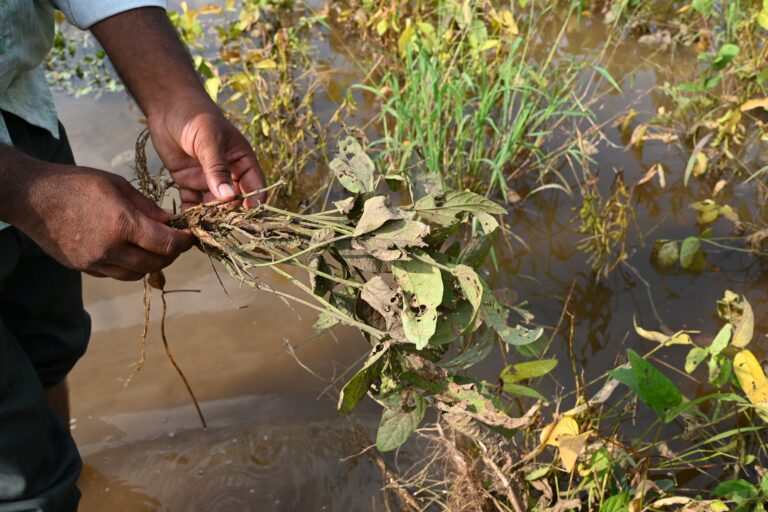- Invasive alien species, which can spread and sustain without human assistance outside their natural distribution, are causing environmental and economic damage worth trillions in India.
- Lack of legal oversight, little coordination between agencies and low public awareness are some of the major hindrances to manage these species. The existing biosecurity framework must be improved, writes Achyut Kumar Banerjee in this commentary.
- Networking and information sharing are important, especially when several Green India Missions are mushrooming in the country, which if unattended could be an avenue for invasive alien plant species to spread.
- The views expressed in this commentary are that of the author.
Biological invasions are a major global challenge for the conservation of biodiversity, maintenance of ecosystem health and sustainable livelihoods. India is not new to the concept and consequences of invasive alien species (IAS). A recent estimate reproduced from a global study on invasive species economics published in the Nature journal, has put the cost of IAS on the Indian economy between at least Rs 8.3 trillion to Rs 11.9 trillion (USD 127.3 billion to USD 182.6 billion) in the last 60 years.
These figures are likely to rise manifold if the environmental impacts can be estimated in monetary terms. The number of new IAS, and consequently the impacts, will increase in the coming decades, especially in emerging economies like India, due to the unprecedented rate of globalisation and climate change. The ongoing COVID-19 pandemic has also shown us what an invasive species is capable of. Although infectious diseases are rarely treated as biological invasion, the SARS-CoV-2 virus has demonstrated the typical traits and impacts of an invasive species.
Plant species, the lifeforms which are way smarter than we previously thought, are generally the major shareholder of any global checklist of IAS, and cause major harm to agriculture, industry and human health. We should be concerned about the invasive alien plant species (IAPS), especially when the fate of 11 percent of the world’s plant biodiversity that India harbours, is at stake, and along with it, the sustainable livelihoods and human well-being. So, it is time to ask an important question: how prepared are we to prevent and respond to the outbreaks of living organisms, especially plants?
Absence of a dedicated biosecurity infrastructure
As a signatory to the Convention on Biological Diversity (CBD), India has adopted the Aichi Biodiversity Targets, including identification and prioritisation of IAS, control or eradication of the priority species, and implementing measures to prevent their introduction and spread. To safeguard the country’s environment and biodiversity, India has ten legislations related to IAS, as demonstrated in the report on the transnational policy network submitted to the CBD in 2011.
Under The Plant Quarantine Order, 2003, the list of quarantine plants (prohibited, restricted and regulated, Schedule VIII, amended in 2019) includes 57 species, many of which are hosts of important pests or diseases of arable crops and forestry; surprisingly the list does not include any IAPS, even those which are recognised by other government and research agencies in the country. The list of 571 plants and plant materials mentioned in Schedule VI (of the Order) that are permitted to be imported into India with additional declaration and special conditions, has only six recognized IAPS.
The Indian Council of Agricultural Research is the nodal agency for regulating plant imports in India. However, risk assessment of agricultural pests being the primary focus of their activities has presumably led to inaction on the IAPS, as evident from the absences of the recognised IAPS from the quarantine lists. This situation is in stark contrast to the existing mechanisms and responsibilities of governing bodies for regulating the import of germplasms, GMOs, transgenics and biocontrol agents.
A large number of IAPS were accidentally introduced into India, predominantly as transport contaminants. The devastating impact of IAPS like Parthenium hysterophorus, which was introduced accidentally in around 1950, is well-known. Unfortunately, there are no regulatory mechanisms to check the accidental introduction of IAPS at the sea-, land- or airports of the country.

On the domestic front, India has nine policies focused primarily on agricultural pests and insects for different states and regions (e.g., The Assam Agricultural Pests and Diseases Act, 1950). On the country scale, The Destructive Insects and Pests Act, 1914, has focused on preventing the transport of fungal or other plant pests destructive to arable crops and forestry within the country. However, national policy or legislation to regulate movements of IAPS and their management is lacking. Alarmingly, nearly one-third of the recognised IAPS are actively sold by the online nurseries, and the list of the traded species includes some of the world’s 100 worst invasive species like Lantana camara and Mimosa pudica. This lack of overarching legal oversight and complete or partial failure in the enactment of the existing policies have accelerated the unregulated introduction and spread of IAPS in India.
Lack of coordination
India has long recognised the IAPS present in the country. Starting with the first documentation of the Indian alien flora in the mid-20th century, multiple checklists, both regional and national, have been published to date. However, a lack of coordination and consensus persists between several agencies, even between those operating under the same ministry.
For example, the National Biodiversity Authority (NBA) and ENVIS Centre on Floral Diversity, both operating under the Ministry of Environment, Forest and Climate Change, have recognised 63 and 173 IAPS in India, respectively. While there are certainly overlaps between these databases, this discrepancy highlights the absence of a standardised framework to designate alien species as invasive. The promotion of invasive Acacia species by the Tamil Nadu state government for plantation programs is one of the many examples of lack of coordination between central and state agencies and maintenance of uniformity across different operational strata in the country.
Policy roadblocks to tackle invasive alien plant species
When we think about impact, the IAPS growing in our lawns or being sold in the market are often ignored compared to the crop pathogens. This lack of awareness, prevalent across public and government sectors, is the major hindrance for IAPS-specific policy formulation.
Secondly, invasive alien plant species are preferred over natives for several reasons. Consumers prefer having alien ornamentals in their gardens or using abundant aliens for income generation purposes. Resistance from the highly profitable alien ornamental industry and heavy dependence of people on natural resources often make policy implementation difficult. The characters that make these species a treasured commodity, like fast growth and hardiness, are also responsible for their successful invasion in the wild.
Unfortunately, no legal framework exists to hold any person or organisation accountable for unintended impacts caused by these species once they escape human control. Thirdly, IAPS with positive utilities are often promoted by non-governmental organisations for the welfare of marginalised people. For example, Lantana camara, one of the world’s 100 worst invasive species, has been widely used for making handicrafts in different parts of the country.
Over-exploitation of these ‘beneficial’ IAPS has often been visualised (and promoted through scholarly and popular articles) as a management measure. Although this sounds promising, scientific evidence to support this management approach is rare, if not absent. In contrast, the monetary incentives associated with this practice generate community dependence, develop new markets and induce novel invasion, thereby causing more harm than good. Such a positive attitude begets more positivity leading to exploration of other invasive alien plant species for similar benefits. When these long-term effects on human livelihood, not to mention on other life forms, are recognised, the damage is already done, and the feedback loop of IAPS utilisation becomes a major hindrance for policy formulation and implementation.

Road ahead
India has a rich legacy of environmental protection laws. Yet, to prevent future invasions and to minimise the impact of ongoing invasions, we need to walk some extra miles. The formation of a National Invasive Species Strategy and Action Plan should be an effective start. A transparent and decentralised system having different stakeholders (the scientists, policymakers, and trade regulatory bodies) onboard can be established for the effective implementation of the plan.
This system will develop a standardised risk assessment framework to identify species (like black- and white-listing) for trade regulation and necessary management actions. Updating the list of species to be quarantined is needed to prevent novel introductions of the IAPS, and eradication of established invasive alien plant species is required to control ongoing invasions and avoid future damage costs. Similar to the Biological Diversity Act of 2002 and Biological Diversity Rules of 2004, a legal framework to deal with the IAPS problem should be formulated.
It is also important to ensure compliance from all quarters for effective implementation of the policies. Therefore, scientific evidence coupled with the understanding of social perspectives towards management measures should be integral components of the decision-making processes. The system will also ensure the formation of a coordinated national network between different agencies. Networking and information sharing are important, especially when several Green India Missions are mushrooming in the country, which if unattended could be an avenue for IAPS to spread.
No management action can be successful without the voluntary participation of people. The system, therefore, needs to leverage its key resources toward developing an effective communication strategy to increase public awareness. Finally, developing a dedicated and trained task force is required for legal enforcement, improving border security, dissemination of the agency activities and creating public awareness. Our country has developed biosecurity infrastructure for many environmental concerns. Worth mentioning are the formation of the National Biodiversity Authority and the State Biodiversity Boards throughout the country. Now is the time to equip these facilities with IAS-specific programs to safeguard the economy and environment of the country from the negative consequences of the introduction of these species.

CITATION:
Banerjee, A. K., Khuroo, A. A., Dehnen-Schmutz, K., Pant, V., Patwardhan, C., Bhowmick, A. R., & Mukherjee, A. (2021). An integrated policy framework and plan of action to prevent and control plant invasions in India. Environmental Science & Policy, 124, 64-72.
Achyut Kumar Banerjee is a research associate in the School of Life Sciences, Sun Yat-sen University, Guangzhou, China
Banner image: An invasive alien plant species (Mikania micrantha) growing along the roads to Thalassery, Kerala. Roads often function as corridors of long-distance spread and establishment of IAPS. Photo by A. K. Banerjee.













